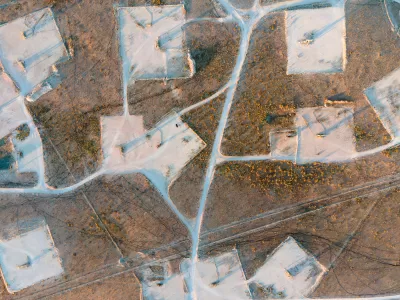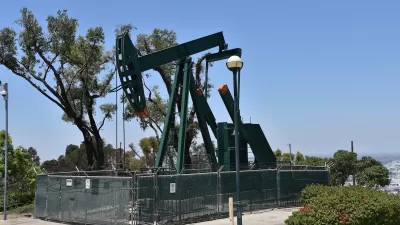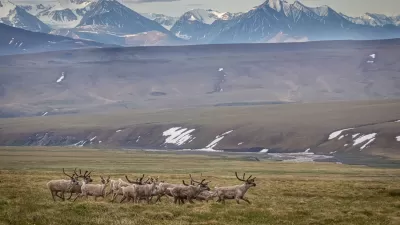An update to federal regulations raises minimum bonding to limit orphaned wells and ensure cleanup costs are covered — but it still may not be enough to mitigate the damages caused by oil and gas drilling.

A new rule from the U.S. Department of Interior will make oil and gas drilling on public lands more expensive, reports Nick Bowlin in High Country News.
“The reform includes a jump in the amount of money that drilling companies must put forward to ensure cleanup of their wells. It also raises the royalty tax rate that operators pay on the minerals they extract on public land, which had not changed in more than a century,” Bowlin adds.
The rule is designed to reduce wasteful speculation and make companies responsible for the costs of environmental cleanup, according to Interior Secretary Deb Haaland. The rule raises minimum bonds for oil and gas leases on public lands from $10,000 to $150,000 — but “Despite these increases, the new bonding levels are unlikely to cover the complete cost of cleaning up the more than 90,000 unplugged wells overseen by the Bureau of Land Management.”
Under the new rule, companies will pay a higher royalty tax rate on profits from extraction.
While many environmentalists praise the changes, some say updating rules for oil and gas extraction is not enough to reduce fossil fuel dependence and extraction in the long term. According to Gladys Delgadillo, a climate campaigner at the Center for Biological Diversity, “Updating oil and gas rules for federal lands without setting a timeline for phaseout is climate denial, pure and simple.”
FULL STORY: Drilling for oil on public land is about to cost a lot more

Study: Maui’s Plan to Convert Vacation Rentals to Long-Term Housing Could Cause Nearly $1 Billion Economic Loss
The plan would reduce visitor accommodation by 25,% resulting in 1,900 jobs lost.

North Texas Transit Leaders Tout Benefits of TOD for Growing Region
At a summit focused on transit-oriented development, policymakers discussed how North Texas’ expanded light rail system can serve as a tool for economic growth.

Using Old Oil and Gas Wells for Green Energy Storage
Penn State researchers have found that repurposing abandoned oil and gas wells for geothermal-assisted compressed-air energy storage can boost efficiency, reduce environmental risks, and support clean energy and job transitions.

Private Donations Propel Early Restoration of Palisades Playground
Los Angeles has secured over $1.3 million in private funding to restore the Pacific Palisades playground months ahead of schedule, creating a modern, accessible space that supports community healing after recent wildfires.

From Blight to Benefit: Early Results From California’s Equitable Cleanup Program
The Equitable Community Revitalization Grant (ECRG) program is reshaping brownfield redevelopment by prioritizing projects in low-income and environmental justice communities, emphasizing equity, transparency, and community benefits.

Planting Relief: Tackling Las Vegas Heat One Tree at a Time
Nevada Plants, a Las Vegas-based nonprofit, is combating the city’s extreme urban heat by giving away trees to residents in underserved neighborhoods, promoting shade, sustainability, and community health.
Urban Design for Planners 1: Software Tools
This six-course series explores essential urban design concepts using open source software and equips planners with the tools they need to participate fully in the urban design process.
Planning for Universal Design
Learn the tools for implementing Universal Design in planning regulations.
Ascent Environmental
Borough of Carlisle
Institute for Housing and Urban Development Studies (IHS)
City of Grandview
Harvard GSD Executive Education
Toledo-Lucas County Plan Commissions
Salt Lake City
NYU Wagner Graduate School of Public Service





























